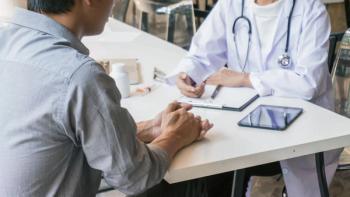
Patient With Cancer Answers Common Questions and Dispels Myths About Clinical Trials
The number one reason to participate in a clinical trial is because someone has to do it so new drugs can be developed to treat and even cure cancer. All of the drugs we have now were made possible by patients who were brave enough to try those drugs.
The words “clinical trial” have always been surrounded by mystery, anxiety and even a hint of desperation — at least for me. Like many people, I thought of clinical trials as a last-ditch Hail Mary to save my life when all other options had been exhausted. During the course of my treatment for stage 4 ovarian cancer I’ve learned differently. I’m currently in a phase 1 clinical trial, so I thought sharing my experience might be useful in dispelling some of the myths as other patients with cancer consider whether to participate in a trial.
When? My oncologist recommended trying a clinical trial while I still had standard-of-care options available. While this isn’t an option for every patient with cancer – depending on number of available treatments, she felt this was a good move because if the clinical trial didn’t work out I would still have treatment options to fall back on – I’m dealing with my third recurrence so my treatment options are shrinking. However, numerous new drugs that target ovarian cancer are in various stages of development. It can take years for those treatments to reach FDA approval and be available to patients. Participating in a clinical trial is allowing me to try one of those drugs now.
Who gets into a clinical trial? Not everyone. I learned that quickly. The study protocols may require numerous lab tests from HIV to hepatitis to a dozen others as well as a CT scan, archived or fresh tumor tissue (requiring a biopsy), an ECG and an ophthalmologic exam. I didn’t get into the first study because the drugs I take for a neurological disorder would mix poorly with the study drug. So we started over and had better success with the second one.
Placebos? It’s true that in many of the later phases of clinical trials, not every patient receives the study drug, but patients will always receive treatment. Neither the patients nor the doctors know who is getting the study drug. My oncologist chose to send me to a clinic that only runs phase 1 clinical trials. In these trials every patient receives the study drug. In my case I’m receiving a drug being given to humans for the first time. Only 70 patients are enrolled in this phase. The purpose is to determine the highest dose that patients can tolerate without adverse side effects and still be effective. So far I have had far less side effects than I’ve experienced with the various standard chemotherapies used to treat my ovarian cancer.
Who pays? It’s a mixed bag. Included in my consent form package was a document that outlined financial responsibility. The study sponsor pays for the drugs and most of the lab work. Those of us who’ve been in treatment for any length of time know this can be a huge chunk of money. However, the form also said my insurance would be billed for “routine” scans and office visits. I’ve been doing this long enough to know there’s no such thing as “routine” scans. The study requires CT scans every six weeks. My insurance only pays for one per three months. That’s where it’s important to ask questions and thoroughly investigate before signing on the dotted line. My new oncologist, as well as the cancer research coordinator, assured me if insurance doesn’t pay, the bills can be submitted to the study sponsor for payment. I’m about to test that theory with a scan and biopsy scheduled at the end of this month.
Quality of care? In the meantime, I’m receiving high quality, individualized care in a state-of-the-art facility. The research coordinator and a scheduler work out all the details for me. I do have to travel frequently to the clinic for lab work to track the impact of the drug. It’s time intensive. But this is a targeted drug therapy that’s leaps and bounds ahead of the chemotherapy currently available. The drug seeks out and destroys cancer cells without killing healthy cells. What an improvement that would be.
Will it work? The ultimate question is whether the study drug will stop the progression of my cancer. This is my third recurrence. I don’t want to wait too long to find out, but I have to abide by the trial protocol. I won’t have a tumor marker test and CT scan until the end of October.
What if it doesn’t? There are other clinical trials available at this clinic for patients like me. I would have to go through the preliminary evaluations and qualify for a new study. Or I can opt to return to standard chemotherapy. That’s the beauty of participating in clinical trials at this stage in my treatment. I still have options.
Bottom line? The number one reason to participate in a clinical trial is because someone has to do it so new drugs can be developed to treat and even cure cancer. All of the drugs we have now were made possible by patients who were brave enough to try those drugs. I was nervous before my first infusion, even scared, but this clinic is the perfect place for treatment. It’s located adjacent to a hospital. My oncologist is a renowned cancer researcher who founded the clinic. Much research had been done to get this drug to this place where it could be tested on humans. My only complaint? I have to take steroids before, during and after the treatment. Otherwise, no issues. I hope one day patients will routinely take this drug and experience none of the side effects so common with the chemotherapy many of us currently receive.
These are my experiences, and it’s hard to generalize when it comes to the myriad of cancers and cancer treatments with which patients are dealing. Clinical trials might not be right for every patient, but they’re worthy of consideration. Patients can get an overview of what clinical trials are available by going to
For more news on cancer updates, research and education, don’t forget to




